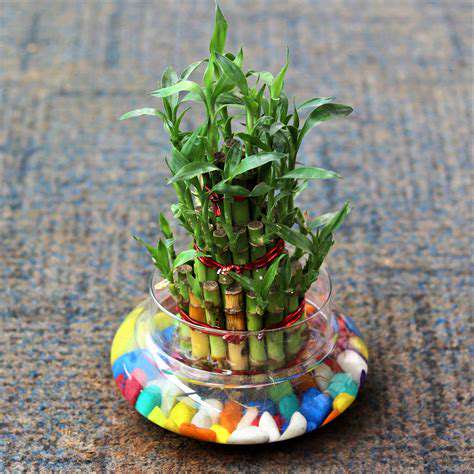Choosing plants that promote well being
The Adaptable Spider Plant
With its cascading green-and-white striped leaves, the spider plant excels at removing formaldehyde, xylene, and toluene from indoor air. These hardy specimens flourish in bright indirect light but tolerate lower light conditions better than most houseplants. Their rapid growth produces numerous spiderettes - perfect for sharing with friends or expanding your own air-purifying collection.
Elegant Peace Lilies
The glossy leaves and white blooms of peace lilies effectively combat benzene, formaldehyde, and trichloroethylene. These tropical beauties demand consistent moisture and humidity to maintain their air-cleaning efficiency. Place them in bathrooms or kitchens where steam naturally occurs, or mist regularly in drier environments.
Nearly Indestructible Snake Plants
Nicknamed mother-in-law's tongue for their sharp, upright leaves, snake plants excel at nighttime oxygen production. Their striking vertical growth makes ideal space-saving air purifiers for corners and narrow areas. These drought-tolerant wonders can survive weeks without water, making them perfect for forgetful plant parents.
Healing Aloe Vera
Beyond its skin-soothing gel, aloe vera's thick leaves absorb formaldehyde and benzene from particleboard and cleaning products. This succulent thrives on neglect, requiring minimal watering while steadily improving air quality. Keep one in your home office or bedroom for both aesthetic and functional benefits.
Strategic Plant Placement
Maximize air purification by clustering plants in areas where you spend the most time - bedrooms, living rooms, and home offices. Grouping several plants together creates microclimates that boost humidity and purification efficiency. Rotate plants seasonally to ensure even growth and continued toxin removal from all areas of your home.
Stress-Reducing Greenery: Bringing Tranquility Indoors

The Science of Plant Therapy
Multiple peer-reviewed studies demonstrate how indoor plants lower cortisol levels and blood pressure. Simply viewing living greenery triggers our parasympathetic nervous system, initiating the relaxation response. Office workers with desk plants report 15% higher job satisfaction and lower stress levels compared to plant-free colleagues.
Selecting Soothing Specimens
When choosing stress-reducing plants, consider both visual appeal and care requirements. Plants with rounded leaves (like rubber plants) promote calmness more effectively than spiky varieties. Fragrant herbs like lavender and mint provide aromatherapy benefits when brushed against or crushed lightly between fingers.
The Mindfulness Connection
Caring for plants forces us to slow down and focus on the present moment. This daily practice builds mindfulness skills that reduce anxiety and improve emotional regulation. Many therapists recommend plant care as part of treatment for depression and PTSD.
Creating Calming Corners
Transform high-stress areas into peaceful retreats with carefully arranged plant groupings. Place a comfortable chair near a cluster of plants to create an instant relaxation nook. Add a small water feature to amplify the stress-reducing effects through soothing sound.
Low-Maintenance Stress Relief
For maximum benefit with minimal effort, choose hardy varieties like ZZ plants or pothos. These forgiving plants thrive on intermittent care while still providing psychological benefits. Their resilience makes them ideal for busy individuals seeking natural stress reduction.
Mastering smooth acceleration and braking techniques is essential for preserving your electric vehicle's battery health. When drivers avoid jerky movements and sudden stops, they dramatically reduce chemical stress within the battery cells. This careful approach directly translates to fewer charge cycles, meaning your battery pack will maintain peak performance for years longer while requiring fewer replacements. The financial and environmental benefits of this driving style make it a smart choice for any EV owner.
Plants for Focus and Concentration: Enhancing Productivity

Botanical Brain Boosters
Certain plants enhance cognitive function through multiple mechanisms. Improved air quality increases oxygen flow to the brain while reducing airborne distractions. The color green has been shown to stimulate creativity and problem-solving abilities. Even the act of glancing at plants during work provides micro-breaks that refresh mental focus.
Top Productivity Plants
Rosemary's invigorating scent enhances memory retention by 15-20%. Boston ferns act as natural humidifiers, preventing dry air that causes fatigue. The rhythmic growth patterns of lucky bamboo create visual interest without distraction. Choose plants that match your work style and environment for maximum benefit.
Designing Productive Spaces
Create focus zones by placing concentration-enhancing plants near work surfaces. Use taller plants as natural room dividers to define workspaces in open areas. Position trailing plants like ivy on high shelves where their downward growth won't obstruct sightlines but still provides greenery.
The Maintenance Advantage
Establishing a plant care routine builds discipline that transfers to work habits. Tracking watering schedules develops the same organizational skills needed for project management. Observing plant growth patterns cultivates patience and attention to detail valuable in professional settings.
Seasonal Adjustments
Rotate plants seasonally to maintain optimal growing conditions and visual interest. Bright flowering plants boost winter morale when daylight decreases. Move plants closer to windows in darker months, then create shade in summer to prevent scorching. This seasonal awareness keeps both plants and people performing at their best.











